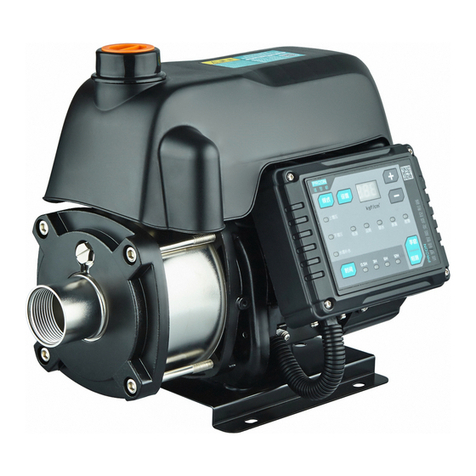
RPSwaterpumps.com
INSTALLATION DETAILS
Ensure there are no shadows or other obstructions on the solar panels. While shadowing a small
corner of a single panel may not seem like a big deal, since the panels are connected in series, a small
shadow can limit the power output from all other panels connected in series! This means a small
shadow on a single panel could reduce system power by hundreds of watts. Time to get out that
chainsaw and trim some trees!
Solar Power Train Controller — Your Controller is not waterproof and should be located in a dry
dust-free location, protected from the sun and the elements and pests such as mice and bugs. Mice love
to chew wires and spiders and moths will build nests wherever they can find room. While we
understand you cannot eliminate all pests, it might be time to spray some insecticides around your
shed and set some mousetraps! There is nothing worse than finding insulation chewed off your
electrical wires. *The fan remains running in low power mode at all times to protect the equipment. This
fan uses very little power and it running, increases the lifetime of the system.
Tankless Pressure Pump or Eco-Steady Booster Pump - Your pump is designed for use out of the
direct elements, sun, rain and snow. Covering or building into a small enclosure is ideal. Since water
does expand when it freezes, care should be taken to winterize the system if being used in a climate
that experiences hard freezing. If foot valve is being used, care should be taken in plumbing the intake
to ensure tight connections which will avoid the loss of prime.
Batteries - Unless you already bought a system that included the appropriate number of RPS Deep
Cycle batteries, customers will need to supply their own battery bank. RPS recommends 12V AGM /
GEL / sealed lead acid batteries that are designed for maintenance free operation. More common
flooded deep cycle marine or RV batteries can also be used. Batteries should be stored in a dry location
protected from the elements. See page on wiring batteries.
SOLAR PANELS — Solar panels should be
mounted on a secure structure, ground mount
or top of pole mount. Several ideas can be found
at RPSSolarPumps.com. Panels should face true
South and at an angle appropriate for your
latitude. If you are mounting your panels on an
already built structure, try to get as close to the
correct angle as possible.




























